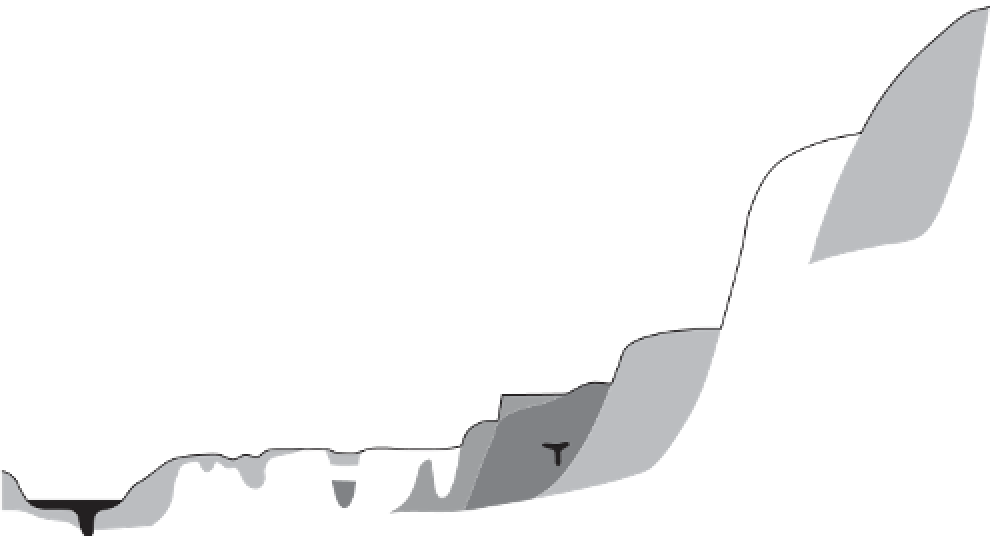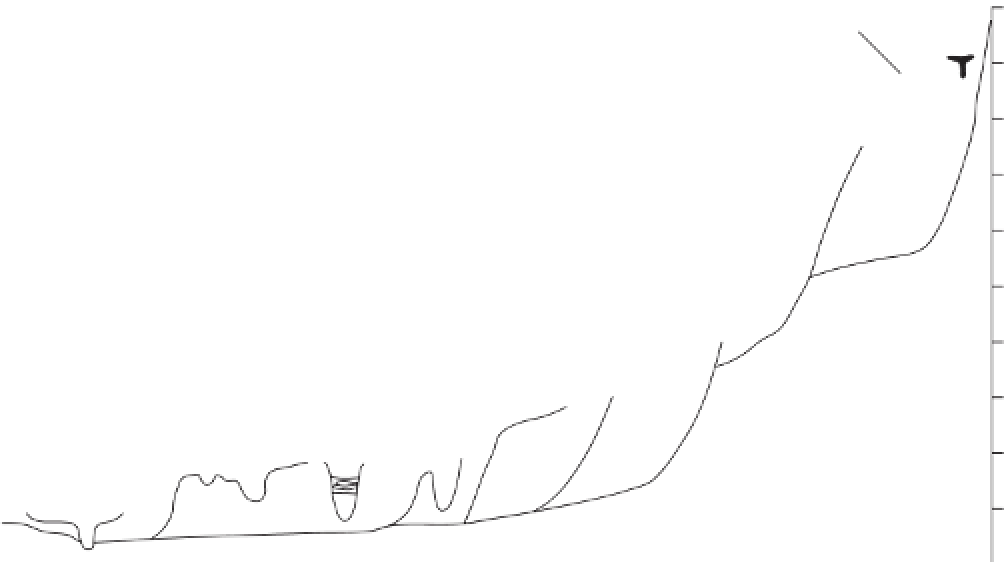Geology Reference
In-Depth Information
Ter race
8
123,000
years old
275
Fossil frost wedge
casts and involutions
91,000
years old
Terrace
7
40,000,
80,000-90,000
years old
18,000-23,000
years old
250
Terrace
6
7,000
years old
Terrace
5
3,200
years old
500-700
years old
Terrace 4
Ter race 3
Terrace 2
Pre-Quaternary
Deposits
Modern
225
Figure 9.11
Terraces on the upper Loire River, France (diagrammatic).
Source:
Adapted from Colls
et al.
(2001)
in the Swabian-Bavarian Alpine foreland, are climatically
controlled terraces produced as the climate swung from
glacial to interglacial states and back again. The rivers
deposited large tracts of gravel during glacial stages, and
then cut into them during interglacial stages. Semi-arid
regions are very susceptible to climatic changes because
moderate changes in annual precipitation may produce
material changes in vegetation cover and thus a big
change in the sediment supply to streams. In the south-
west USA, arroyos (ephemeral stream channels) show
phases of aggradation and entrenchment over the last few
hundred years, with the most recent phase of entrench-
ment and terrace formation lasting from the 1860s to
about 1915.
Terraces tend to survive in parts of a valley that escape
erosion. The slip-off slopes of meanders are such a place.
The stream is directed away from the slip-slope while
it cuts down and is not undercut by the stream. Spurs
at the confluence of tributary valleys also tend to avoid
being eroded. Some of the medieval castles of the middle
Rhine, Germany - the castles of Gutenfels and Maus, for
example - stand on small rock-floored terraces protected
by confluence spurs on the upstream side of tributary
valleys.
Lacustrine deltas
Lacustrine
or
lake deltas
are accumulations of alluvium
laid down where rivers flow into lakes. In moving from
a river to a lake, water movement slows and with it
the water's capacity and competence to carry sediment.
Providing sediment is deposited faster than it is eroded,
a lacustrine delta will form.
HUMAN IMPACTS ON THE
FLUVIAL SYSTEM
Human agricultural, mining, and urban activities have
caused changes in rivers. This section will consider three
topics: the increased flux of fluvial sediments; the effect
of dams on streamflow, sediment transfer, and channels;
and river modification and management.






















